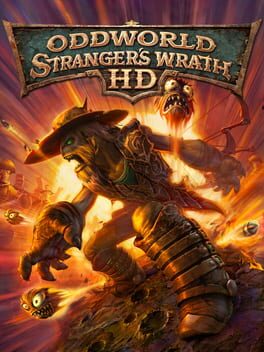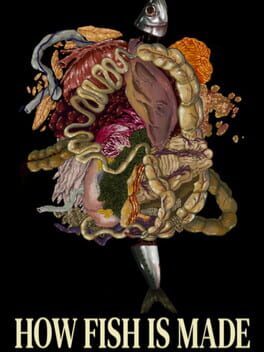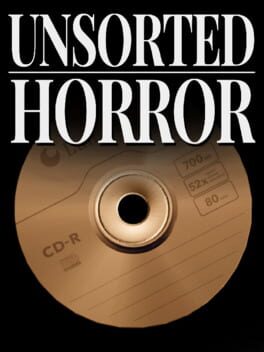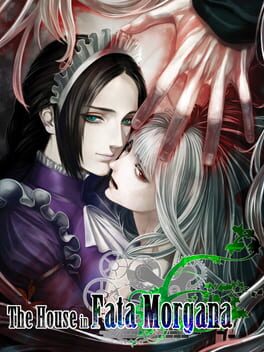I_Da_Pappi
2018
I typically don't write reviews but…
Nomada Studio's Gris is a relaxing and serene yet deeply emotional experience. Through the game's genius use of color and music, which potentially represent different stages of grief, the breathtaking visual and auditory experience beautifully narrates the story of overcoming loss without any spoken dialogue. Technically, the two aspects of Gris that really stand out to me are the visuals and the soundtrack. Every moment in the game is so meticulously crafted that any scene could serve as a stunning wallpaper. The soundtrack is easily one of the best in video games. I acknowledge that I am biased since I love serene piano compositions and ambient musical pieces, but most importantly, the music not only complements the visuals but also drives the narrative effectively, making Gris's emotional experience even more profound. Although Gris is not among my all-time favorite games and its simplistic gameplay makes it challenging to rate super highly, I strongly recommend that everyone play it. For me, Gris transcends the boundaries of a typical video game; it is a work of art meant to be admired and pondered. And in a world where some still question whether video games can be considered art, Gris makes a compelling argument in favor of their artistic values without uttering a single word.
- PC OPTIMIZATION -
☑️ Amazingly Optimized
🔲 Meets the PC port performance standard
🔲 The Port has some issues
🔲 PC port is in an Unacceptable State
🔲 Unplayable
- WORTH BUYING @ FULL PRICE -
🔲 Yes
🔲 Its Free
☑️ Wait for sale
🔲 No
ENGINE: Unity
Nomada Studio's Gris is a relaxing and serene yet deeply emotional experience. Through the game's genius use of color and music, which potentially represent different stages of grief, the breathtaking visual and auditory experience beautifully narrates the story of overcoming loss without any spoken dialogue. Technically, the two aspects of Gris that really stand out to me are the visuals and the soundtrack. Every moment in the game is so meticulously crafted that any scene could serve as a stunning wallpaper. The soundtrack is easily one of the best in video games. I acknowledge that I am biased since I love serene piano compositions and ambient musical pieces, but most importantly, the music not only complements the visuals but also drives the narrative effectively, making Gris's emotional experience even more profound. Although Gris is not among my all-time favorite games and its simplistic gameplay makes it challenging to rate super highly, I strongly recommend that everyone play it. For me, Gris transcends the boundaries of a typical video game; it is a work of art meant to be admired and pondered. And in a world where some still question whether video games can be considered art, Gris makes a compelling argument in favor of their artistic values without uttering a single word.
- PC OPTIMIZATION -
☑️ Amazingly Optimized
🔲 Meets the PC port performance standard
🔲 The Port has some issues
🔲 PC port is in an Unacceptable State
🔲 Unplayable
- WORTH BUYING @ FULL PRICE -
🔲 Yes
🔲 Its Free
☑️ Wait for sale
🔲 No
ENGINE: Unity
I typically don't write reviews, but...
Oddworld Inhabitants' Oddworld: Stranger's Wrath partly defined my childhood, and I hadn't had the chance to revisit it as an adult until now. The magic I experienced as a child is still very much present, and I'm thrilled to express that the game is just as exhilarating now as it was back then. Not only does the gameplay remain uniquely innovative, with the camera's position serving as a primary mechanic—a feature I haven't encountered in any other shooter—but the world of Oddworld is also incredibly fun and distinctive. It stands out in a remarkable way, setting itself apart from other fictional worlds in video games. The game's plot twist, occurring two-thirds through the storyline, is nothing short of incredible. Moreover, the tonal shift that follows provides a feeling that is unlike anything I've experienced in other games. The radical nature of this shift, coupled with the significant changes in both narrative and gameplay, is exceptionally cool. I sincerely hope for a sequel in the future. However, even if it doesn't materialize, I plan to revisit this classic for years to come.
- PC OPTIMIZATION -
🔲 Amazingly Optimized
☑️ Meets the PC port performance standard
🔲 The Port has some issues
🔲 PC port is in an Unacceptable State
🔲 Unplayable
- WORTH BUYING @ FULL PRICE -
☑️ Yes
🔲 Its Free
🔲 Wait for sale
🔲 No
ENGINE: Unnamed/Unknown Proprietary Engine
Oddworld Inhabitants' Oddworld: Stranger's Wrath partly defined my childhood, and I hadn't had the chance to revisit it as an adult until now. The magic I experienced as a child is still very much present, and I'm thrilled to express that the game is just as exhilarating now as it was back then. Not only does the gameplay remain uniquely innovative, with the camera's position serving as a primary mechanic—a feature I haven't encountered in any other shooter—but the world of Oddworld is also incredibly fun and distinctive. It stands out in a remarkable way, setting itself apart from other fictional worlds in video games. The game's plot twist, occurring two-thirds through the storyline, is nothing short of incredible. Moreover, the tonal shift that follows provides a feeling that is unlike anything I've experienced in other games. The radical nature of this shift, coupled with the significant changes in both narrative and gameplay, is exceptionally cool. I sincerely hope for a sequel in the future. However, even if it doesn't materialize, I plan to revisit this classic for years to come.
- PC OPTIMIZATION -
🔲 Amazingly Optimized
☑️ Meets the PC port performance standard
🔲 The Port has some issues
🔲 PC port is in an Unacceptable State
🔲 Unplayable
- WORTH BUYING @ FULL PRICE -
☑️ Yes
🔲 Its Free
🔲 Wait for sale
🔲 No
ENGINE: Unnamed/Unknown Proprietary Engine
2022
I typically don't write reviews, but...
Wrong Organ’s How Fish is Made is a short freeware horror experience that expertly employs environmental design to evoke a pervasive sense of dread in the player, which is central to the game's impact. Through interactions with various characters, the game's progression unfolds similarly to a visual novel. While mechanically, How Fish is Made doesn’t offer much beyond basic gameplay, Wrong Organ delivers a solid, thought-provoking, albeit not particularly profound, short horror experience that explores the concepts of agency and choice. On a meta-level, the exploration of these concepts serves as a commentary on the paradox found in player agency and choice mechanics in video games.
- PC OPTIMIZATION -
🔲 Amazingly Optimized
☑️ Meets the PC port performance standard
🔲 The Port has some issues
🔲 PC port is in an Unacceptable State
🔲 Unplayable
- WORTH BUYING @ FULL PRICE -
🔲 Yes
☑️ Its Free
🔲 Wait for sale
🔲 No
ENGINE: Unity
Wrong Organ’s How Fish is Made is a short freeware horror experience that expertly employs environmental design to evoke a pervasive sense of dread in the player, which is central to the game's impact. Through interactions with various characters, the game's progression unfolds similarly to a visual novel. While mechanically, How Fish is Made doesn’t offer much beyond basic gameplay, Wrong Organ delivers a solid, thought-provoking, albeit not particularly profound, short horror experience that explores the concepts of agency and choice. On a meta-level, the exploration of these concepts serves as a commentary on the paradox found in player agency and choice mechanics in video games.
- PC OPTIMIZATION -
🔲 Amazingly Optimized
☑️ Meets the PC port performance standard
🔲 The Port has some issues
🔲 PC port is in an Unacceptable State
🔲 Unplayable
- WORTH BUYING @ FULL PRICE -
🔲 Yes
☑️ Its Free
🔲 Wait for sale
🔲 No
ENGINE: Unity
2023
I typically don't write reviews, but...
Unsorted Horror was my introduction to Mike Klubnika's catalog of games, and wow, am I impressed. Coming from the same realm as Kitty Horrorshow, Klubnika demonstrates a deep understanding of what makes for the best horror in games. Unsorted Horror is a collection of short horror games, all centered around detailed machinery and dread, and each one is simply excellent. The art style, writing (including the concepts explored), music, and audio design are masterful. The most profound piece in this collection is, by far, Tartarus Engine; its ending left me absolutely shaken with its refreshing take on horror concepts. Just like Kitty Horrorshow, I would love to see Klubnika make a full-length horror game.
- PC OPTIMIZATION -
🔲 Amazingly Optimized
☑️ Meets the PC port performance standard
🔲 The Port has some issues
🔲 PC port is in an Unacceptable State
🔲 Unplayable
- WORTH BUYING @ FULL PRICE -
🔲 Yes
☑️ Its Free
🔲 Wait for sale
🔲 No
ENGINE: Unity
Unsorted Horror was my introduction to Mike Klubnika's catalog of games, and wow, am I impressed. Coming from the same realm as Kitty Horrorshow, Klubnika demonstrates a deep understanding of what makes for the best horror in games. Unsorted Horror is a collection of short horror games, all centered around detailed machinery and dread, and each one is simply excellent. The art style, writing (including the concepts explored), music, and audio design are masterful. The most profound piece in this collection is, by far, Tartarus Engine; its ending left me absolutely shaken with its refreshing take on horror concepts. Just like Kitty Horrorshow, I would love to see Klubnika make a full-length horror game.
- PC OPTIMIZATION -
🔲 Amazingly Optimized
☑️ Meets the PC port performance standard
🔲 The Port has some issues
🔲 PC port is in an Unacceptable State
🔲 Unplayable
- WORTH BUYING @ FULL PRICE -
🔲 Yes
☑️ Its Free
🔲 Wait for sale
🔲 No
ENGINE: Unity
2023
I typically don't write reviews but…
Tango Gameworks's Hi-Fi Rush is a game with a fantastic concept and excellent execution, especially considering its complexity. Essentially, through Hi-Fi Rush, Tango Gameworks effectively explores the scenario of "What if Devil May Cry was a rhythm game?" Like Devil May Cry (of which I am also a huge fan), Hi-Fi Rush is a hack-and-slash game, but its approach to gameplay is unique due to its rhythm-based mechanics, which are integral to the overall experience. The combat centers around executing light and heavy attacks and various combos in time with the music, making listening to the music an active component of the gameplay and enhancing the overall immersion. The soundtrack consists of both licensed and license-free tracks of excellent quality, akin to an alternative/indie rock album. This genre of music complements the happy-go-lucky vibe and bright anime cell-shaded graphical style presented in the game, proving that graphical fidelity in video games isn’t what truly matters. This is something that the triple-A gaming industry, for the most part, doesn’t seem to understand.
While the combat in Hi-Fi Rush may take some getting used to, its skill curve and complex mechanics are far easier to master than those of Devil May Cry. Though I could compile a long list comparing the two games at a mechanical level, there are two main aspects that highlight how Hi-Fi Rush is much more accessible compared to Devil May Cry. First, Hi-Fi Rush uses an auto-targeting system, unlike Devil May Cry's manual lock-on targeting system. Second, Hi-Fi Rush’s version of the Devil May Cry style meter, referred to as the Rhythm meter, primarily builds up based on landing combos with good timing, rather than simply executing as many varied combos as quickly as possible, as seen in the Devil May Cry series. What makes Hi-Fi Rush’s Rhythm meter even more accessible is the game's consistent beat, which strikes a perfect balance. The beat is fast enough to maintain the fast-paced flow integral to real-time action combat systems but not so fast that your hands begin to hurt and fatigue after a while—an issue I encounter with the Devil May Cry combat system (a game that generally plays as fast as you and rewards your self-inputted fast gameplay). Overall, Hi-Fi Rush’s combat and gameplay are fluid and polished. More importantly, all of its inner workings and complexities, centered around its blend with music and rhythm game mechanics (which must have taken forever to get right), contribute to a fun gameplay experience.
Narratively speaking, Hi-Fi Rush isn’t anything remarkable. It tells a relatively basic, straightforward story that complements the level design. This isn’t a bad thing, as narratives across all mediums don’t need to be complex or thought-provoking to be good. The characters serve their purpose; they aren’t terribly complex, nor do they need to be, given that the narrative itself is written to accommodate this. Protagonist Chai, in particular, is a great character. While he’s written to be annoying, you can’t help but like him, which is exacerbated by Robbie Daymond’s excellent voice performance. Daymond is known for roles such as Goro Akechi in Persona 5 Royal (Atlus), Megumi Fushiguro in Jujutsu Kaisen (MAPPA), Prompto Argentum in Final Fantasy XV (Square Enix), and Lloyd Bannings in The Legend of Heroes series (Nihon Falcom). On a personal level, Chai resonated with me because he represents my close attachment to music, specifically my evolving love for rock music. Chai is a character that represents individuals like me, who at one point didn’t know how to play an instrument but still had a profoundly deep understanding of music. In particular, there is a cutscene towards the end of the game that effectively emphasizes this.
As a writer, what I appreciate most about Hi-Fi Rush narratively is its dialogue. The game has a comedic structure similar to movies like Deadpool (Marvel Entertainment) and video games like Sunset Overdrive (Insomniac Games), both of which are effective in their endeavors. This aspect of Hi-Fi Rush is particularly impressive since it’s typically very difficult to write a script with this type of comedic structure that doesn’t feel cringe-worthy. In contrast, Square Enix’s game Forspoken is an example of how to mess this up, resulting in a script that is wholly cringe-worthy.
As I finish writing this, a sense of sadness washes over me as I confront the realization that Xbox has shut down Tango Gameworks without any known sensible reason. The creative minds at Tango Gameworks produced one of the best games Xbox had published in many years. Consequently, Hi-Fi Rush, with all its amazing innovations, will never see a sequel, as without Tango Gameworks, there is no possibility of one. Hi-Fi Rush was clearly created by developers who were deeply passionate about crafting the best and most enjoyable gaming experience, rather than focusing solely on monetization. This dedication is sadly rare in the triple-A gaming industry, where companies with vast financial resources often refuse to take creative risks due to an extreme and at times unreasonable fear of financial loss. Hi-Fi Rush serves as a symbol in the triple-A industry of what it means to create something with passion, with the end goal of producing the best product rather than merely the most profitable one. While Hi-Fi Rush isn’t the best game I've ever played, I deeply appreciate it for what it is and what it stands for. And in an industry where the triple-A space often refuses to innovate, Hi-Fi Rush is more than enough for me.
- PC OPTIMIZATION -
☑️ Amazingly Optimized
🔲 Meets the PC port performance standard
🔲 The Port has some issues
🔲 PC port is in an Unacceptable State
🔲 Unplayable
- WORTH BUYING @ FULL PRICE -
☑️ Yes
🔲 Its Free
🔲 Wait for sale
🔲 No
ENGINE: Unreal Engine 4
Tango Gameworks's Hi-Fi Rush is a game with a fantastic concept and excellent execution, especially considering its complexity. Essentially, through Hi-Fi Rush, Tango Gameworks effectively explores the scenario of "What if Devil May Cry was a rhythm game?" Like Devil May Cry (of which I am also a huge fan), Hi-Fi Rush is a hack-and-slash game, but its approach to gameplay is unique due to its rhythm-based mechanics, which are integral to the overall experience. The combat centers around executing light and heavy attacks and various combos in time with the music, making listening to the music an active component of the gameplay and enhancing the overall immersion. The soundtrack consists of both licensed and license-free tracks of excellent quality, akin to an alternative/indie rock album. This genre of music complements the happy-go-lucky vibe and bright anime cell-shaded graphical style presented in the game, proving that graphical fidelity in video games isn’t what truly matters. This is something that the triple-A gaming industry, for the most part, doesn’t seem to understand.
While the combat in Hi-Fi Rush may take some getting used to, its skill curve and complex mechanics are far easier to master than those of Devil May Cry. Though I could compile a long list comparing the two games at a mechanical level, there are two main aspects that highlight how Hi-Fi Rush is much more accessible compared to Devil May Cry. First, Hi-Fi Rush uses an auto-targeting system, unlike Devil May Cry's manual lock-on targeting system. Second, Hi-Fi Rush’s version of the Devil May Cry style meter, referred to as the Rhythm meter, primarily builds up based on landing combos with good timing, rather than simply executing as many varied combos as quickly as possible, as seen in the Devil May Cry series. What makes Hi-Fi Rush’s Rhythm meter even more accessible is the game's consistent beat, which strikes a perfect balance. The beat is fast enough to maintain the fast-paced flow integral to real-time action combat systems but not so fast that your hands begin to hurt and fatigue after a while—an issue I encounter with the Devil May Cry combat system (a game that generally plays as fast as you and rewards your self-inputted fast gameplay). Overall, Hi-Fi Rush’s combat and gameplay are fluid and polished. More importantly, all of its inner workings and complexities, centered around its blend with music and rhythm game mechanics (which must have taken forever to get right), contribute to a fun gameplay experience.
Narratively speaking, Hi-Fi Rush isn’t anything remarkable. It tells a relatively basic, straightforward story that complements the level design. This isn’t a bad thing, as narratives across all mediums don’t need to be complex or thought-provoking to be good. The characters serve their purpose; they aren’t terribly complex, nor do they need to be, given that the narrative itself is written to accommodate this. Protagonist Chai, in particular, is a great character. While he’s written to be annoying, you can’t help but like him, which is exacerbated by Robbie Daymond’s excellent voice performance. Daymond is known for roles such as Goro Akechi in Persona 5 Royal (Atlus), Megumi Fushiguro in Jujutsu Kaisen (MAPPA), Prompto Argentum in Final Fantasy XV (Square Enix), and Lloyd Bannings in The Legend of Heroes series (Nihon Falcom). On a personal level, Chai resonated with me because he represents my close attachment to music, specifically my evolving love for rock music. Chai is a character that represents individuals like me, who at one point didn’t know how to play an instrument but still had a profoundly deep understanding of music. In particular, there is a cutscene towards the end of the game that effectively emphasizes this.
As a writer, what I appreciate most about Hi-Fi Rush narratively is its dialogue. The game has a comedic structure similar to movies like Deadpool (Marvel Entertainment) and video games like Sunset Overdrive (Insomniac Games), both of which are effective in their endeavors. This aspect of Hi-Fi Rush is particularly impressive since it’s typically very difficult to write a script with this type of comedic structure that doesn’t feel cringe-worthy. In contrast, Square Enix’s game Forspoken is an example of how to mess this up, resulting in a script that is wholly cringe-worthy.
As I finish writing this, a sense of sadness washes over me as I confront the realization that Xbox has shut down Tango Gameworks without any known sensible reason. The creative minds at Tango Gameworks produced one of the best games Xbox had published in many years. Consequently, Hi-Fi Rush, with all its amazing innovations, will never see a sequel, as without Tango Gameworks, there is no possibility of one. Hi-Fi Rush was clearly created by developers who were deeply passionate about crafting the best and most enjoyable gaming experience, rather than focusing solely on monetization. This dedication is sadly rare in the triple-A gaming industry, where companies with vast financial resources often refuse to take creative risks due to an extreme and at times unreasonable fear of financial loss. Hi-Fi Rush serves as a symbol in the triple-A industry of what it means to create something with passion, with the end goal of producing the best product rather than merely the most profitable one. While Hi-Fi Rush isn’t the best game I've ever played, I deeply appreciate it for what it is and what it stands for. And in an industry where the triple-A space often refuses to innovate, Hi-Fi Rush is more than enough for me.
- PC OPTIMIZATION -
☑️ Amazingly Optimized
🔲 Meets the PC port performance standard
🔲 The Port has some issues
🔲 PC port is in an Unacceptable State
🔲 Unplayable
- WORTH BUYING @ FULL PRICE -
☑️ Yes
🔲 Its Free
🔲 Wait for sale
🔲 No
ENGINE: Unreal Engine 4





